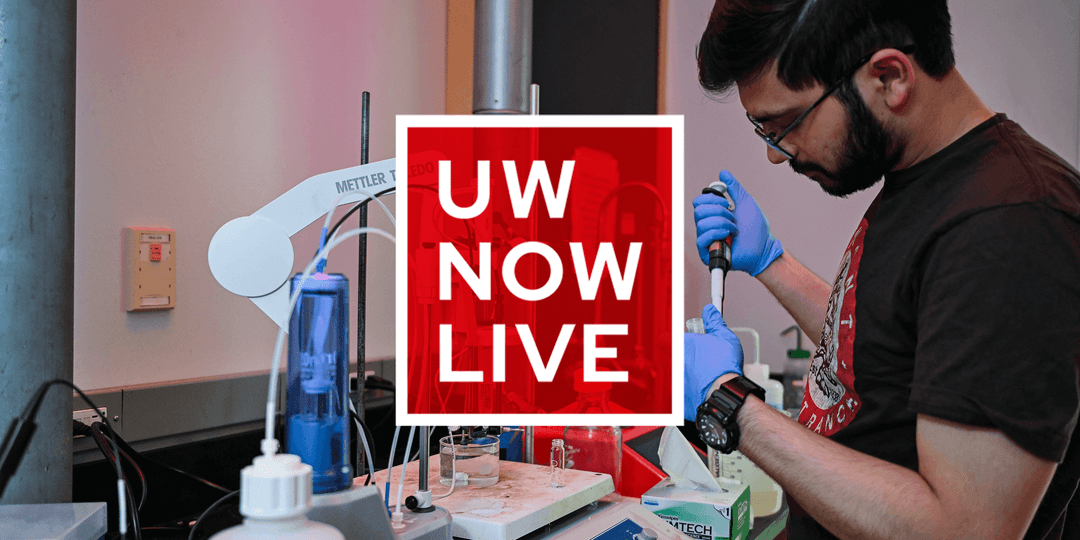In recent years, the H5N1 avian influenza virus has presented a rising threat to animals and agriculture. First identified in Russia in 2020, the highly pathogenic virus appeared in American bird populations in 2022 and was identified in dairy cattle in March 2024. Since then, the Centers for Disease Control has identified three cases in which people became infected from cows.
For Wisconsin, the Dairy State, the spread of flu into cows presents an economic as well as public health threat. On the June 18, 2024, episode of The UW Now Livestream, UW faculty and alumni experts talked about H5N1 and the steps being taken to track the virus and limit its dangers.
Host Mike Knetter, CEO of the Wisconsin Foundation and Alumni Association, joined Darlene Konkle ’89, DVM’93, MS’97; Professor John Lucey; and Keith Poulsen ’00, DVM’04, PhD’12. Konkle is Wisconsin’s state veterinarian; Lucey, a food chemist, is director of the UW’s Center for Dairy Research; and Poulsen is the director of the UW’s Veterinary Diagnostic Laboratory.
Konkle noted that H5N1 has been “the most expensive animal disease outbreak in U.S. history,” causing the deaths of millions of birds. “This particular virus has deadly effects in poultry,” she said. “It causes high mortality, … and it transmits very readily from bird to bird in large poultry flocks.”
The virus has infected dairy herds in at least 12 states, but Konkle added, its effect on cows has been much less severe. “These cattle, for the most part survive,” she said. “They lose milk production. They have a drop in feed intake. In some cases, they have fevers. They obviously don’t feel well for a time, but they for the most part recover.”
Poulsen, whose expertise is in zoonotic diseases, discussed the ways that his lab tracks the spread of H5N1 and other viruses. He noted the importance of convincing farmers and dairy companies to be willing partners in his lab’s efforts. And to encourage them to be willing, public authorities should help mitigate the economic impact of the disease.
“There’s an economic component, and then there’s a public health side as well,” he said. “Unfortunately, we can’t get those diagnostics [to fully track the virus] because of some of the limitations from our industry participation. What does industry need in order to participate? They need relevant indemnity programs. We need clear regulations about how we get out of quarantine. We know that we’re going to find positive cows, and industry needs to know what that means.”
Lucey spoke about the effect that the virus has on dairy production. When cows become infected with avian influenza, their milk production drops and quality falls off. “This milk is very messed up,” he said. And it’s hard to control the spread of a virus on a dairy farm because “dairy farms are not a sterile environment.”
However, he noted that avian influenza need not present a high risk for human infection. Pasteurization, he said, shows a high efficacy in killing the virus.
“Pasteurization is our critical control point,” he said. “We are really only at the state where Wisconsin, Cornell, and one overseas group has looked at whether pasteurization is effective against this virus, but so far they indicate the pasteurization is effective.”
Knetter asked his guests whether there’s danger of transmitting the disease through the meat of infect animals.
“As long as you’re cooking to the appropriate temperatures, poultry and beef or safe to eat,” said Konkle.
He also asked whether the World Dairy Expo — which will bring cows to Madison from outside the state — presents a danger. Poulsen said that all participating cows will be required to test for influenza.
“We have the biosecurity and the testing and the tools to be able to make sure that we can maintain business continuity for shows like World Dairy Expo,” said Poulsen.



